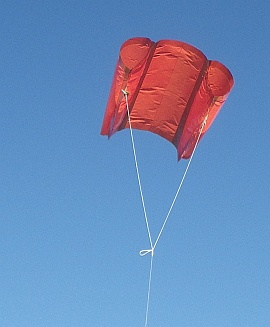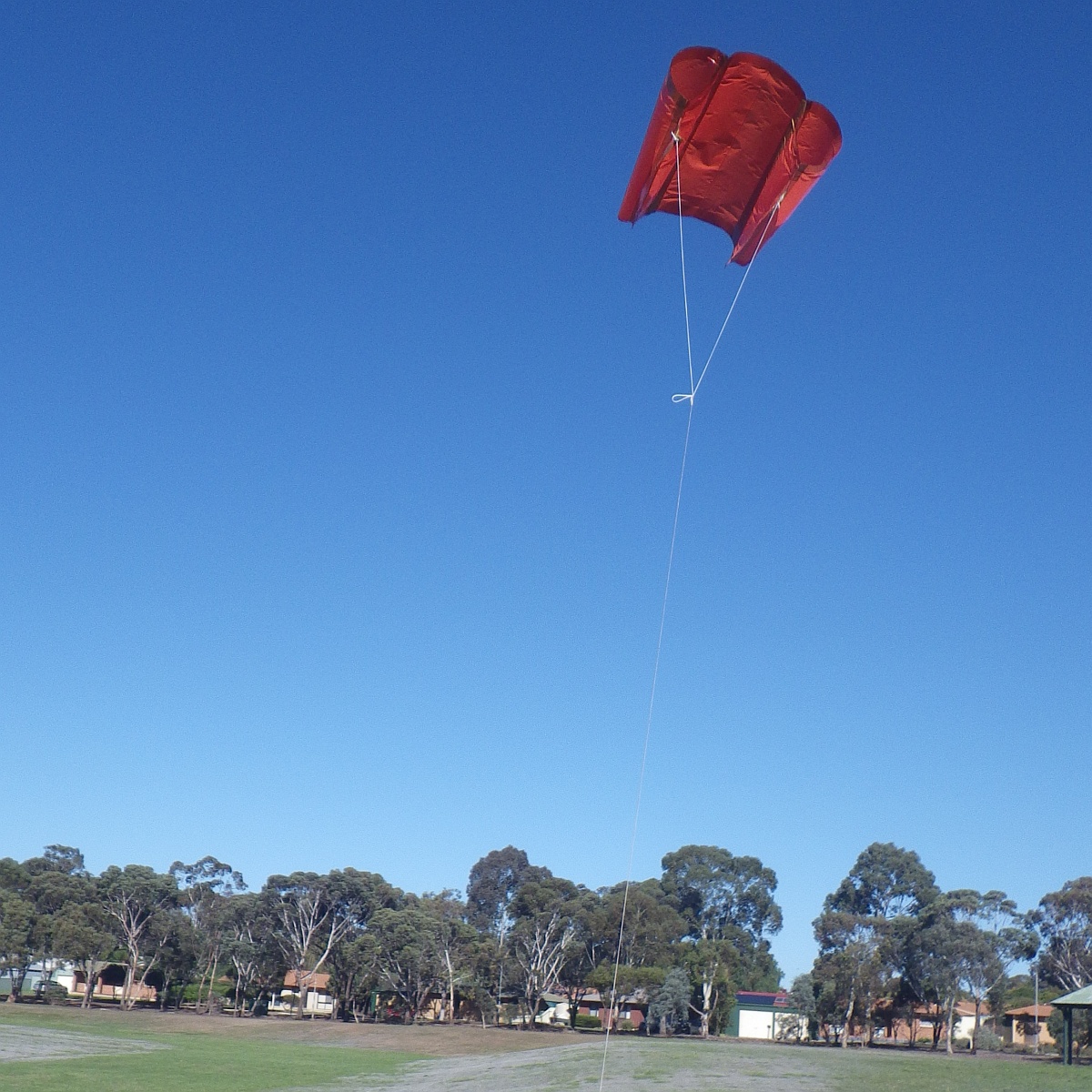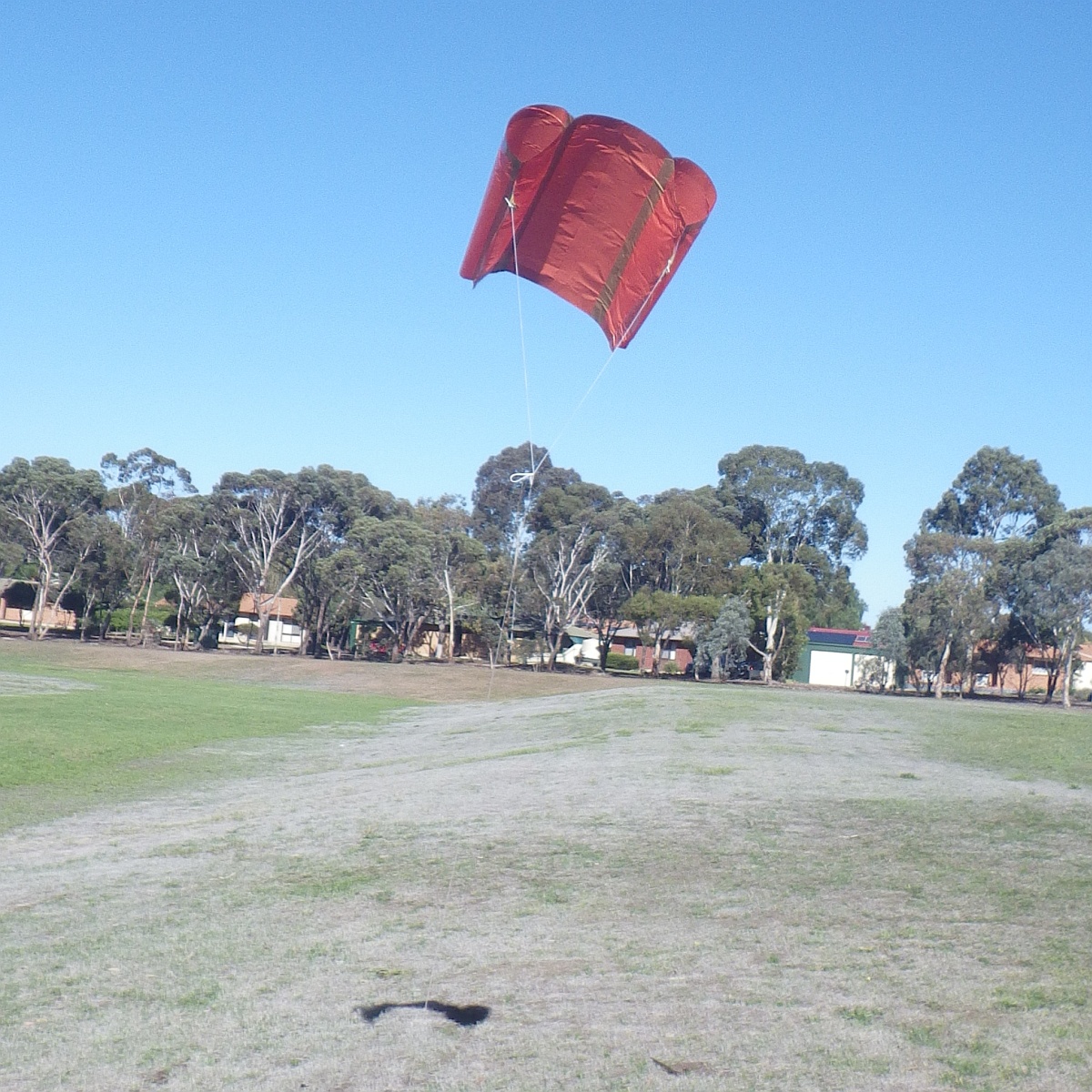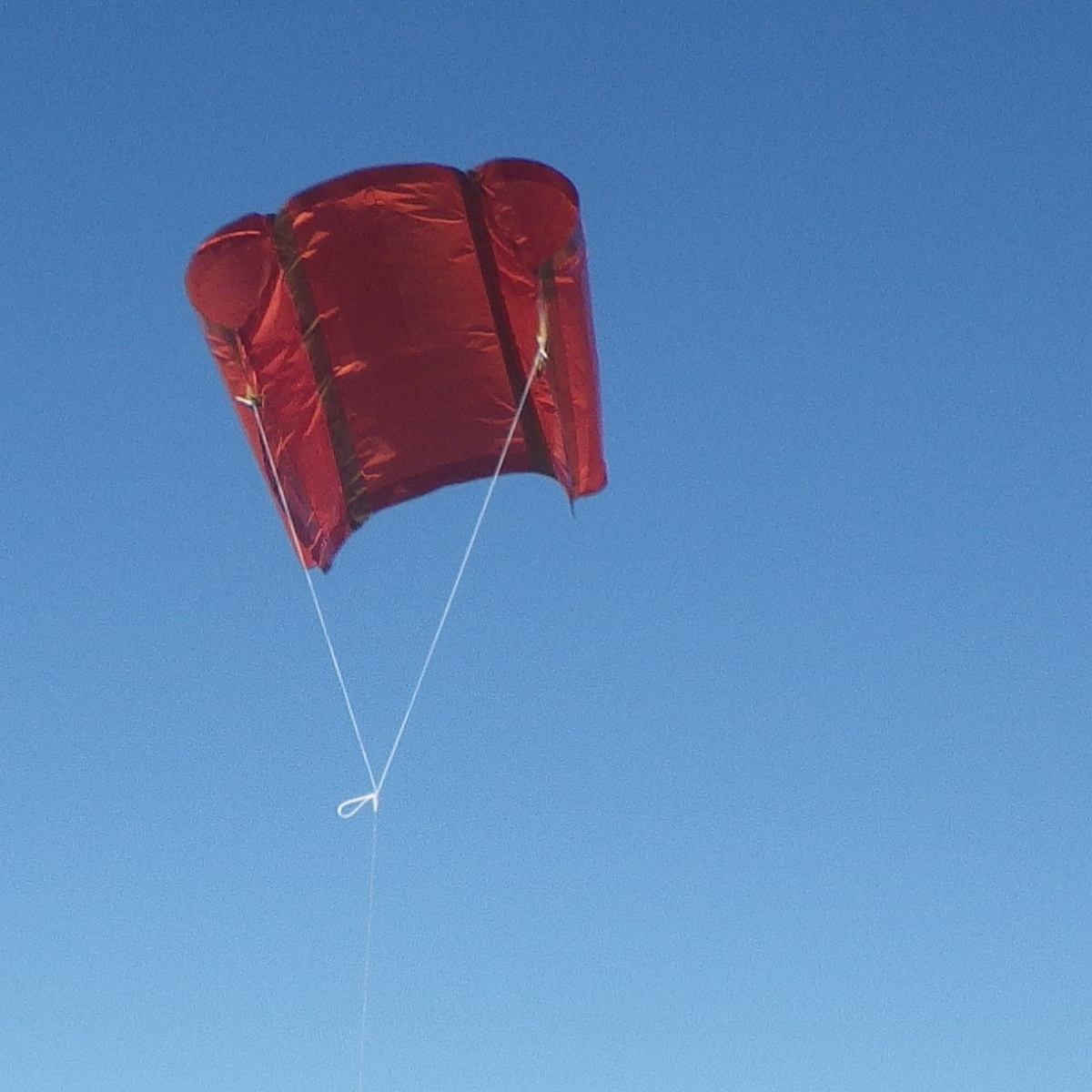- Home Page
- Soft Kites
- Soft Sled Kite
Soft Sled Kite
Gusty Moderate Winds: No Problem!
Looking out the window and at the latest weather readings online, it seemed a great time to head out with the new MBK Soft Sled kite. This one was actually the second build to take to the air, since the first one was a trial run to prove the concept.
 MBK Soft Sled
MBK Soft SledSure enough, a couple of minor design changes were needed, including
extra tape to improve the stiffness of the two cells in flight. Also,
the second build was carefully photographed at every step for the free
instructions published on this website.
After I arrived at the field, skies were nearly completely blue, and a healthy breeze was ruffling the treetops. On pulling out the wind meter, I discovered it had jammed. Those normally reliable little cups just didn't want to spin today—a mechanical problem as it turned out later.
At home, I gave the Windtronic meter a shake and the cups freed up! Let's hope they stay that way. The device has had the odd knock during its lifetime.
A
soft sled kite is not quite as easy to launch as a delta, since it does
takes a moment or two to get some air pressure into the big ends of the
cells. But as soon as they popped out, up went the kite. Minor creasing
was apparent for a while, but with the kite higher and gulping more air,
the cells soon firmed up and flight became more balanced.
With the kite on not much more than 10 meters (30 feet) of line, several photos were taken. That out of the way, the line was let out to 30 meters (100 feet) for a while and then 60 meters (200 feet). On this length, full zoom was required to get some decent video. What a pity about the lack of cloud! A cloudy backdrop shows up a kite's movement so well.
On this site, there's more kite-making info than you can poke a stick at. :-) Want to know the most convenient way of using it all?
The Big MBK E-book Bundle is a collection of downloads—printable PDF files which provide step-by-step instructions for many kites large and small.
That's every kite in every MBK series.
In the windy conditions, the soft sled kite was often accelerating up and then slowly dropping back. There was not much side-to-side flying and no looping around at all—a credit to the original Pocket Kite that inspired this design of mine!
A small flock of lorikeets flew past at low level, together with some other small birds.
Although the kite was only 60 cm (24 in.) tall, it was pulling very firmly for its size. That would partly be due to the wind speed but also because sleds of all kinds have a decent pull on them! Despite this, the 50-pound Dacron had a fair amount of sag. I think wind drag had a lot to do with that.
Bringing the kite down was straightforward, although the inflated plastic resisted with higher tension in the line as it was wound back onto the heavy wooden winder. As the soft sled passed down through 100 feet off the grass, I noticed it was at a fairly steep line angle. This often happens when you pull a kite in, since you are changing the direction of the "relative wind"—upward in this case, which made the kite fly steeper.
It must be said that the MBK Soft Sled has a great wind range for something of such modest size. With gusts around 30 kph, it didn't even look uncomfortable. Perhaps it will stay stable right up to the high 30s or low 40s. Time will tell!
Soft Sled Kite Gallery
Click or tap on any photo below to start up the gallery viewer:
The video below was taken on another day down at a beach. I didn't have an adjustable knot in the bridle, so a bit of tail on one side was necessary to keep the little sled straight and true!
The story or stories above document actual flying experiences. My write-ups are definitely "warts and all," since things don't always go totally as planned. However, half the fun of kiting is anticipating the perfect flight. When it happens, it's magic!
As mentioned earlier, there's more kite-making info here than you can poke a stick at. :-)
Want to know the most convenient way of using it all?
The Big MBK E-book Bundle is a collection of downloads—printable PDF files which provide step-by-step instructions for many kites large and small.
That's every kite in every MBK series.



